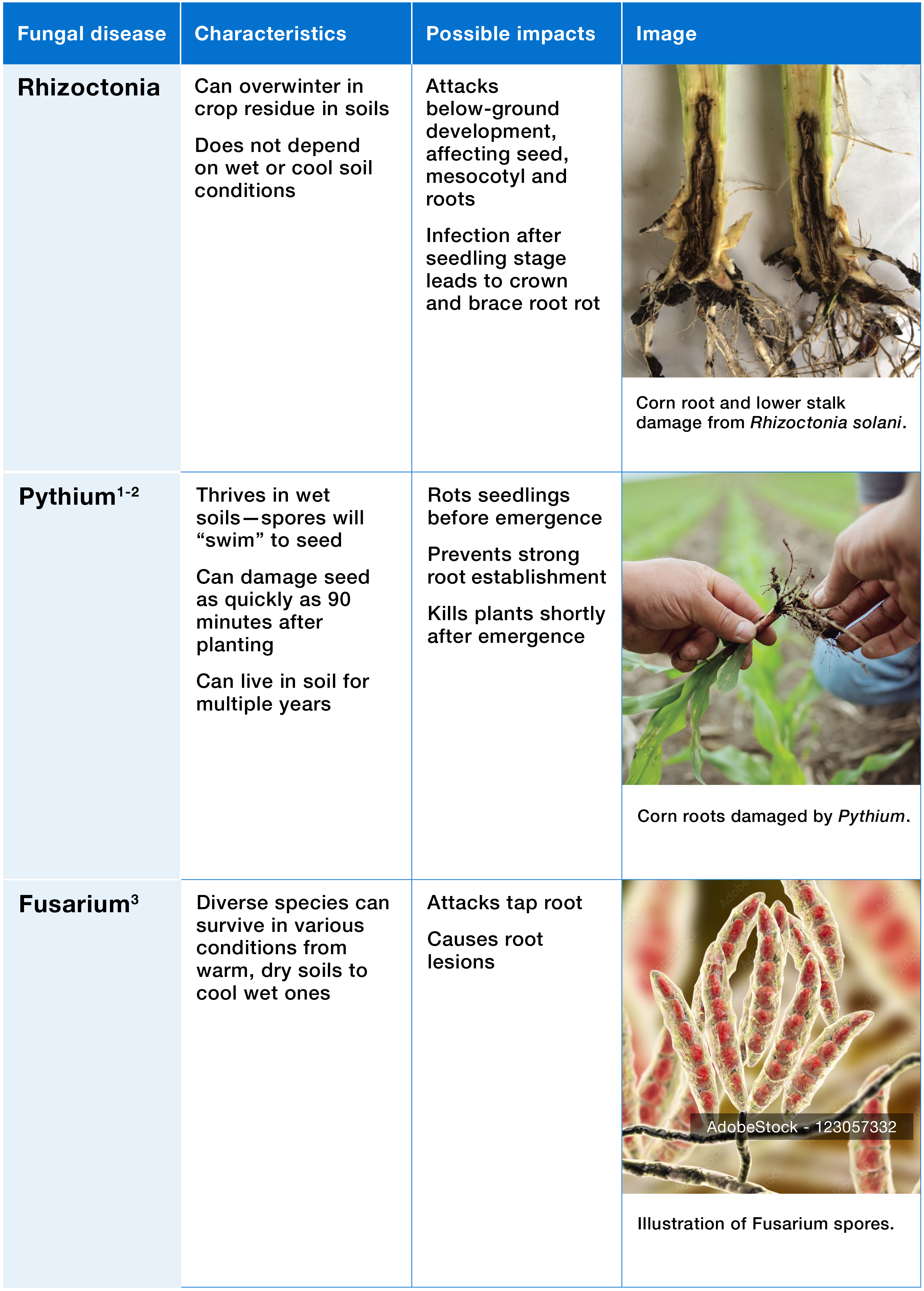Biofungicide Seed Treatments Enable Healthy Crops and Soil

Planting is always a tenuous time on the farm. Weather at planting is often even more variable than at other times of the year, as unseasonably warm spring days can swing into cold snaps, all usually accompanied by lots of rain. These kinds of conditions tend to create ideal conditions for soil-borne fungal diseases such as Rhizoctonia, Fusarium and Pythium. These three diseases can all cause damping off, where seeds collapse and decay.

Farmers have to weigh different factors in choosing the best window of time to plant their seed. Planting early may leave seeds more vulnerable to diseases. Waiting for warmer, drier conditions gives crops less time to grow and could reduce yield. By helping to protect seeds against fungal diseases, fungicide seed treatments give farmers more flexibility to plant even when conditions are not ideal. Today, some seed treatment recipes, including those from Corteva Agriscience, include biofungicides along with conventional fungicides. Biofungicide seed treatments defend against these diseases using products derived from nature and can help preserve healthy organisms in the soil.
Biofungicides are comprised of living bacteria. These bacteria have anti-fungal properties and will generally kill disease fungi on contact.
In areas where they have been approved for use, Corteva Agriscience offers two biofungicides for corn: L-2013 P and L-2012 R, and one for soybeans L-2030 R. These biofungicides are made of different strains of Bacillus bacteria that target Rhizoctonia, Fusarium and Pythium. Bacillus bacteria occur naturally in soil, water and growing plants.4 When used in seed treatments, the bacteria work by colonizing root systems in young plants. The Bacillus bacteria compete with fungal diseases, suppressing them and providing a layer of biological protection for developing roots.5 Since the bacteria continue to naturally colonize and grow, the roots stay protected as the plant develops through its early stages, when germinating seeds and plants are most vulnerable to damping off diseases.
The soil is filled with beneficial organisms, from earthworms to an array of bacteria that help plant roots take up nutrients. Biofungicide seed treatments from Corteva Agriscience help suppress damaging diseases without harming beneficial organisms in the soil. And because they are applied directly to the seed, the fungal suppression activity of these seed treatments is limited to the immediate vicinity of that seed and the roots that develop from it. Biofungicides are able to work against diseases below-ground, where foliar sprays can’t reach while also allowing for a smaller treatment footprint compared to spray-applied fungicides. Studies of biofungicides using strains of Bacillus bacteria have found that they do not negatively impact non-target organisms.4-5 Biofungicide seed treatments help protect crops without disrupting the delicate balance of the soil biome that is also critical to the long-term productivity of farms.
Seed treatments from Corteva Agriscience include conventional fungicides and biofungicides because both are often necessary to effectively control the multiple fungal diseases that threaten newly planted seed. Fungal diseases can also develop resistance very quickly. Exposing these diseases to multiple modes of action—from biological and conventional solutions—help ensure a variety of fungicides remain effective for farmers.
Biofungicide seed treatments from Corteva Seed Applied Technologies help farmers protect their seed against damaging diseases that reduce yield, while also helping them maintain biodiversity in the soil and protect against resistance development. With naturally occurring bacteria, farmers can complement the activity of conventional fungicides for broad-based protection that helps seed get off to a strong start even in challenging conditions.
1 “The Real Threat to Soybean Yields: Phytophthora and Pythium.” Farm Progress. December 20, 2016. https://www.farmprogress.com/planting/the-real-threat-to-soybean-yields-phytophthora-and-pythium.
2 “Pythium - an early season pain in corn and soybeans.” University of Illinois Extension, Illinois Field Crop Disease Hub. Accessed November 20, 2023. http://cropdisease.cropsciences.illinois.edu/?p=1071.
3 “Fusarium root rot on soybean.” University of Minnesota Extension. Accessed November 20, 2023. https://extension.umn.edu/soybean-pest-management/fusarium-root-rot-soybean.
4 “Biopesticides Registration Action Document Bacillus pumilus strain BU F-33.: U.S. Environmental Protection Agency. June 12, 2013. https://www.regulations.gov/document/EPA-HQ-OPP-2012-0265-001.
5 “Bacillus subtilis MBI 600 (129082) Fact Sheet.” U.S. Environmental Protection Agency. November 1999.
L-2013 P, L-2012 R and L-2030 R may not be approved for sale or use in all states or countries. Contact your local regulatory agency to determine if a product is registered for sale or use in your area. Always read and follow label directions.